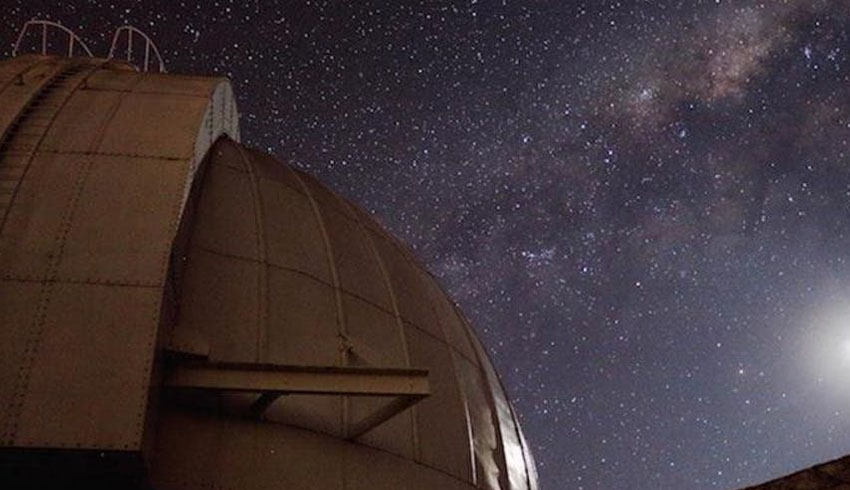The research has also brought the properties of nearby stars into never-before-seen precision, and could allow us to catch a rare glimpse of the conditions of planets orbiting them in the future.
PhD researcher Adam Rains used a cutting-edge approach to measure the properties of 16 stars, making them clearer than ever before.
Rains explained, “To put things in perspective, the measurement precision we achieved is like looking at a dollar coin 4,600 kilometres away and measuring its diameter to the nearest 0.25 millimetres.
“We now know the temperature of these stars to a similar level of precision! For example – this is like measuring a 5,000 degree star to within 50 degrees. To do this, we combined the light from multiple telescopes.”
Rains explained ordinarily, features like the size and temperature of stars are very difficult to measure directly.
“The stars we looked at are relatively close in comparison. That's why this research is so important – so much of our knowledge of stars all over the universe is built upon what we have learnt about the stars closest to us,” he said.
Rains looked at a number of stars like Tau Ceti, which have been previously observed by other astronomers, to make sure his results matched up.
The study was carried out using a method called interferometry to harness the power of multiple telescopes.
“Currently, the biggest telescopes on the planet have mirrors about 10 metres across. Even larger telescopes are under construction, but there are practical limits on just how big they can get,” Rains added.
“If you can combine the light from separate telescopes you can achieve the resolution of a much larger telescope – without actually building one. It's like having a 130-metre telescope.”
For this technique to work, you have to make sure the starlight from the telescopes arrives at the camera at exactly the same time.
This is achieved by having 'mirror-trains'. Mirrors are placed on carriages that move along a rail system to control when each telescope's light hits the camera.
"The further apart your telescopes, the longer the rail system you need, but this technique is the only one that lets us study other stars at such high resolution," Rains said.
His work was based on observations carried out at the Very Large Telescope facility in Chile, operated by the European Southern Observatory.
The research has been published by the Monthly Notices of the Royal Astronomical Society.

